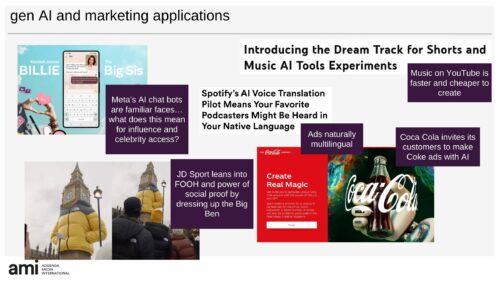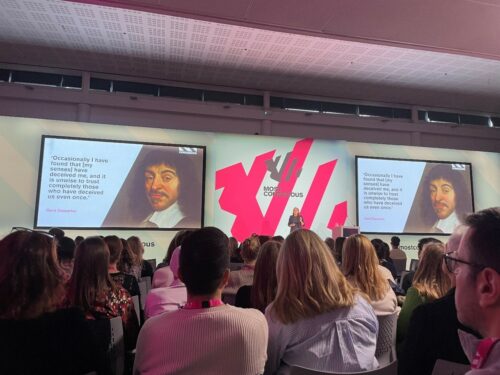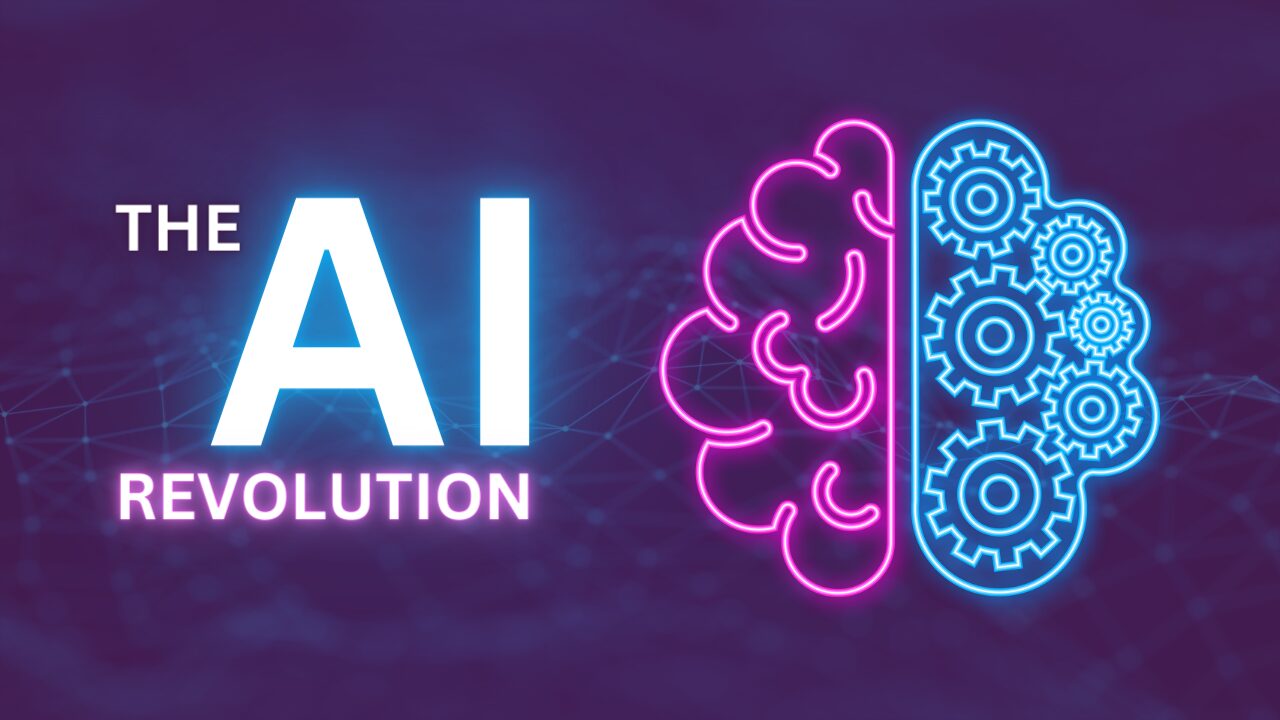In December, we attended Most Contagious London 2023 event. Amid stellar speaker line up, inspiring campaign case studies and thought-provoking panel discussions, one thing that stood out to us especially was the treatment given to the generative AI conversation. I know, I know, at this point when I hear a mention of GenAI, I too ask what more can be said about it that has not been said too many times already. But brilliance is in the detail, and so, without further ado, these are the details we found to be refreshingly brilliant:
People love solving puzzles
When FOOH (fake out of home) took over the marketing conversation by the brute force of its novelty, the key concerns plaguing the industry conversations were that this is a) a fad that will pass without creating any actually useful marketing application; and b) that it will increase distrust in the digital world and the media industry. Jeffrey McGregor, CEO of Truepic, told CNN in June 2023:
“When anything can be faked, everything can be fake. Knowing that generative AI has reached this tipping point in quality and accessibility, we no longer know what reality is when we are online.”
While it is still too early to say whether either of these predictions have come true, we now know that there is also a positive side to this trend – people love a puzzle. There is a practice in advertising when the creative message is left somewhat incomplete, allowing the recipient of the message to connect the dots and, as Richard Holman describes, to enjoy a satisfying ‘aha’ moment. This approach tickles our human curiosity and leaves us feeling happy and reassured in our cognitive powers. When done right, FOOH happens to have a similar effect. Chloe Markowicz, Contagious editor, summed it up at the event:
“It is important if the ideas are good, not if they are real. People are not easily deceived. They like seeing FOOH on social because it gets them to think, gets them out of mindless scrolling.”
Language is where AI is currently at its best
While everyone has been captivated by the latest news from OpenAI – the demo of AI video creation tool Sora – language and voice is where the technology is at its most mature currently. This also means that innovation in the linguistic use of generative AI is happening faster, and the results are more easily applicable, at least for now.
This is exemplified by Search companies partnering with GenAI providers and building their own tools, resulting in new ways to deliver search ads and enhance campaign attribution. The former especially has been in the limelight as AI-boosted conversational search may mean a complete change of web infrastructure. Additionally, we are already seeing companies like Spotify using AI translation to increase podcast reach internationally and Meta’s Familiar Faces AI experience leaves us wondering how GenAI tools will be enhancing personalisation for B2B and B2C influencer activities. What does it feel to have a 24/7 access to your favourite influencer, celebrity, or journalist? How advertiser partnerships play into that? It may not be long till we find out.

Next stop – unsupervised learning
David Beresford, senior strategist at Contagious, noted importance for marketers and innovators of reaching towards “imagination over imitation”. It is one thing to use AI to manipulate the voice of David Attenborough and quite another to employ it in order to decode the language of your pet.
He pointed out that humans are not the best when it comes to explaining their own behaviour. For GenAI to continue learning free from human bias, the next stage of development will be enabling AI to observe human behaviour independently. Trust and safety are at stake here, especially as the tools are accessible to individuals and hostile states alike. This will therefore only be possible with the technology being properly regulated and fundamental ethical rules being put in place – Constitutional AI, if you will.

Getting back to planet marketing
Amidst the avalanche of future predictions, it is important to remember that GenAI is already a significant part of our day-to-day lives as marketers. Below the surface of flashy news, AI based targeting solutions are improving data analysis opportunities and providing new GDPR compliant ways for using online signals to enhance user targeting. Technical tasks like copywriting and software development are being sped up significantly and progress in the creative space will also democratise access to high quality visual assets. As further use cases emerge and regulation catches up, we will see more companies like Audible who initially chose to put restrictions start introducing bespoke uses for this technology to enable listeners and creators.
The learning for marketers? Stay curious, experiment and be guided by integrity and respect for the consumer.


